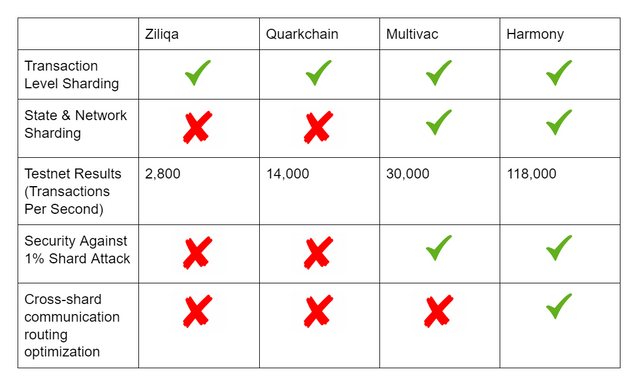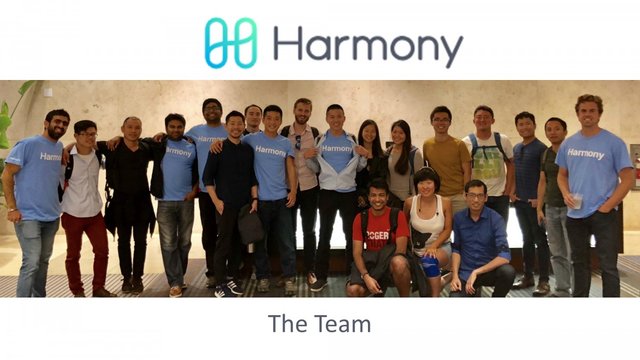That same great love for the fast lane made us come to easily get fascinated by the blockchain technology since the advent of bitcoin.
Bitcoin blockchain was set in such a way that it would bypass third-party intermediaries, thereby changing and enhancing the way transaction were been done; making transactions faster.
As time passed, faster was no longer close to fast, as the bitcoin blockchain did not just continue to reduce in the speed of performing transactions but also the cost of performing a transaction became an issue to debate about.
.jpeg)
We Love Speed
Whilst sourcing for improvement for the bitcoin blockchain, a new blockchain invention named ethereum emerged but sadly was not still able to completely tackle the existing problem which the bitcoin blockchain already faced such as the problem of scalability, high transaction cost, and low speed.
Other blockchain inventions such as EOS did arise to proffer solutions to the transaction throughput by replacing consensus models and also IOTA introducing a new tech called directed acyclic graph (DAG), yet still no headway because there was always a catch for each of the inventions, a catch that implied they would be no significant performance gain without security and decentralization been sacrificed.
These problems have continued to persist over the years, as the nodes have uninterruptedly increased thereby getting the networks more congested, creating a huge inconvenience to users.
Zilliqa, which happens to be the first public blockchain that was proposed to bring an end to the problems of scalability with sharding.
In the hopes that Zillaqa's sharding would be the rescue of every blockchain scalability problem, notwithstanding, wasn't able to live up to expectations. Because it does not support state shardng (I.e dividing the storage of blockchain data).
Users now sourced for a newer faster, a newer scalable, provable security and a newer energy-efficient.

Harmony to the rescue!
Harmony
Harmony has excelled by implementing a sharding-based blockchain that dealt with the existing problems of the blockchain. It is on record that Harmony utilizes the most decentralized form of staking powered by optimized sharding technology.
Harmony will;
• Implement sharding at both consensus and transaction layers
• Increase security
• Allows smaller capacity devices to become nodes on the network
• Improves processing capacity at the same time throughput performance.
The Peculiarity Of Harmony
Bearing in mind that Harmony has come to solve the existing problems of blockchain, it takes a problem-solving approach by applying high standard innovations that have helped in excelling harmony into completely achieving;
.png)
• Full Scalability: Contrary to zilliqa, Harmony will ensure a fully scalable blockchain by ensuring State and Network sharding.
• Secure Shading: Using a distributed randomness generation (DRG) process, harmony's sharding process is uniquely secured.
• Efficient and Fast Consensus: Harmony has an upper hand when it comes to energy efficiency because it is based on PoS rather than PoW
• Adaptive-Threshold PoS: Malicious stalkers can no longer concentrate on single shards because now the volume of total stacking determines the stacking requirement for a node to join the network.
• Scalable Networking Infrastructure: Its infrastructural network is revolutionalized by the adoption of an Adaptive
Information Dispersal Algorithm which allows harmony blocks quickly within shards or across the network by using propagate blocks quickly within shards or across the network.
• Having consistent Cross-Shard Transactions
Harmony Vs Others PoS Blockchains
Harmony stands out when compared to other PoS blockchains. It utilizes the sharded technology in the most fascinating way that would attract and accommodate a large number of users and allow users to get acquainted with speed and a befitting consensus.
.png)
Technical Standpoint Of Harmony
• PoS Consensus Using BLS Signature Scheme
• Adaptive State Sharding
• Networking and Distribution
.png)
What Combines To Make Harmony
The Pos Consensus and The Boneh–Lynn–Shacham (BLS) Signature Algorithm
Consensus protocol is a key component of blockchain and of which harmony utilizes the Proof of Stake (PoS) consensus protocol which depends on a linearly scalable Byzantine Fault Tolerant (BFT) algorithm.
PoW is a process whereby
miners race to find the solution to a cryptographic puzzle—the winner gets the right to propose the
next block and earns some token rewards.
The conventional BFT, Practical Byzantine Fault Tolerant (PBFT) algorithm was surrounded by communication complexity. These complexities lead Harmony into introducing its own BFT called Fast Byzantine Fault Tolerant (FBFT).
Harmony's BFT (FBFT) utilizes a parallel transaction processing to scale with the network's size and completely tackles its connection latency allowing it to reach consensus with a speed of light.
By adding a spin to their mechanism, Harmony employs the Boneh–Lynn–Shacham (BLS) multi-signature, which is an improvement from the ByzCoin’s BFT algorithm that uses Schnorr multi-signatures. It is an improved form in the sense that, instead of using two round-trips for a single
multi-signature, it only requires just one round-trip.
The BLS actually combines to make Harmony's FBFT a 100times faster than other BFT.
Harmony's Sharding
Sharding has been certified to be one of the methods in increasing transaction speed.
Sharding is the process of dividing a database’s computational responsibilities into smaller segments (called shards) which individually carry out their tasks, making the total burden of computation smaller.
Harmony worked on an incomplete sharding method of the Zilliqa network and an inconclusive Omniledger and RapidChain work.
It was stated that in Zilliqa's approach, the division of the blockchain data storage (state sharding) was never included and as such could bring about limitations to devices access to resources used to participate in the network and possess a risk of a single shard been corrupted eventually.
Omniledger and RapidChain then proposed solutions to Zillaqa omission that features state sharding. Omniledger and RapidChain featured a state sharding where each shard holds a subset of the blockchain but was not conclusive.
Harmony was inspired by these three previous work and produced a PoS-based
full sharding scheme, that has been confirmed to be very efficient whilst enhance security against malicious actors.
Harmony's Chains
Harmony contains two chains, viz;
• Beacon Chain — the identity register derived from a randomness generator. Combining Verifiable Random Function (VRF) and Verifiable Delay Function (VDF), Harmony ensures an efficient algorithm for randomness generation.
• Multiple shard chains — store separate blockchain states and process transactions
concurrently.
Harmony's Sharding Process
In the Harmony sharding process, one has to be familiar with terms like
Randomness-Based sharding: Harmony critically examined projects like Ethereum 2.0 and papers such as Omniledger and RapidChain before it introduced a Randomness-based sharding which is a great improvement on previous works.
Here, a random number is mutually agreed upon to decify for each node their sharding responsibilities. Every random number must be unpredictable, unbiaseable, verifiable, and scalable. This style of sharding brings about improved security.Epoch: This is generally the sharding time intervals where all the sharding conditions are fixed and it differs for every epoch. This in turns also aims to further security in the network.
Staking-based Sharding: Stakers have to stake a particular amount to tokens for them to participate and become validators. The amount of token staked by a particular staker determines the total number of voting share such validator will be given.
To keep the shard secured the amount of voting shares by malicious stakers should be less than 1/3 of the voting shares in any shard. This essentially improves security and fairness within the network.Resharding: This is a process of reshuffling after an epoch is over. As validators either decide to stay or leave the network after an epoch has been concluded.
Those who stay receive new voting shares that are randomly assigned based on the number voting shares have with respect to the median of the entire network.
The StandOut Factor — Adaptive State Sharding
State Sharding on the harmony network has stood out and we should have at the back of our minds that the network;
- Allows each shard chain to maintain its own account state on the network
- Supports multiple balances from users contributed as voting shares to different shards
- Redefines smart contract as it can only be held where shard was created.
Network And Distribution
Harmony will implement network engineering techniques. All the techniques combined will propagate a formation that entails smarter messages and faster consensus using a highly concurrent protocol called Kademlia. Kademlia is the routing protocol that makes communication less cumbersome.
Use Case
Dreambet and David
Dreambet is a decentralized online betting platform that utilizes DB tokens based on the Ethereum blockchain in running its ecosystem. Dreambet is a platform that has been known to make people's dream come true through betting.
Amongst those persons who wanted his dreams to be actualized by Dreambet was David, who was a diehard fan of football and a very good customer of Dreambet for a while now. David had always stuck with playing his games online before they started and afterward cashed out his interest.
On a fateful day, David decided to try something different and decided to partake in a Live Bet on Dreambet for an ongoing match between his two least favorite teams. On the 15th minute, David wanted to hurriedly staked a striker of one of the teams to score before the 25th minute of the first half, subsequently, he proceeded to stake the bet.
As a result of the numbers of users presently partaking on Dreambet's live bet and transaction speed of the network, David transaction was confirmed after the 25th minute of the game and was successfully completed few minutes to half time which then rendered his bet null and void because it was already late.
David felt bitter and sad because he staked high and striker scored before that time. Dreambet refunded his token and that of others whose case was similar to that of David's.
Dreambet realized if things continued this way, they might lose customers and make less profit too, so they sourced for better ways to improve their services and Harmony was the Best Recommended.
Dreambet incorporated the blockchain network Harmony so as to meet its need. Whenever a customer like David plays live betting, he would never experience and issue like that because HARMONY will completely solve the speed and scalability issue surrounding the DB token when it was based on some other token. Harmony would also prevent Malicious hackers from wanting to steal user token.
This way David is Happy, Dreambet saves their customers like David and HARMONY saves the Dreambet forever!
Note - This is just a fictitious usecase, nothing here is or was real!
Harmony Token (ONE)
The ONE token drives the harmony ecosystem. This token can be obtained by participation, that is, used as a stake in the consensus model, used to grant validators voting rights.
The ONE token can also be used as a source of payment especially for transaction fees, storage fees and gas fees.
TEAM
The Harmony team comprises persons who come from a healthy background that spans from engineering, academians, entrepreneurs.
Meet the Team!

Conclusion
Harmony Remains distinguished by merging the best research results and engineering practice in the most favorable way so that;
The issue of scalability will seize to continuously arise. Digital currencies will no longer be structurally limited. Thus, harmony will end scalability problems.
Achieving higher transaction throughput should not come at the expense of sacrificing other features like decentralization and security. Harmony would process transactions concurrently by creating groups of validators that will handle transactions. Thus, harmony will provide a satisfying degree of balance between scalability, decentralization, and security
The transaction will be faster and energy-efficient. Thus, Harmony’s consensus protocol goes for speed and energy efficiency.
In summary, we say harmony is fully scalable, provably secure, and energy-efficient.
For more detail on Harmony; check out
• Harmony Website
• Harmony OnePager
• Harmony WhitePaper
• Harmony Medium Blog
• Harmony Telegram Group
• Harmony Twitter
• Harmony LinkedIn
• Harmony Instagram

Hey Garlam - Head of Marketing at Harmony here - really love the article and was wondering if you'd be open to more work as one of our writers!
Message me on telegram - @garlamw (and yes it is the real me - check my twitter to verify my telegram id - https://twitter.com/GarlamWon)
Downvoting a post can decrease pending rewards and make it less visible. Common reasons:
Submit